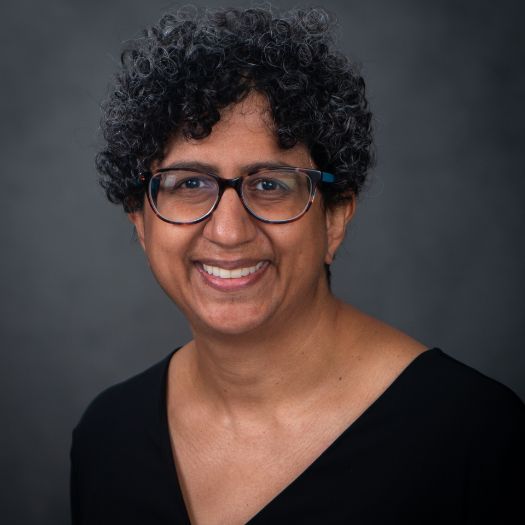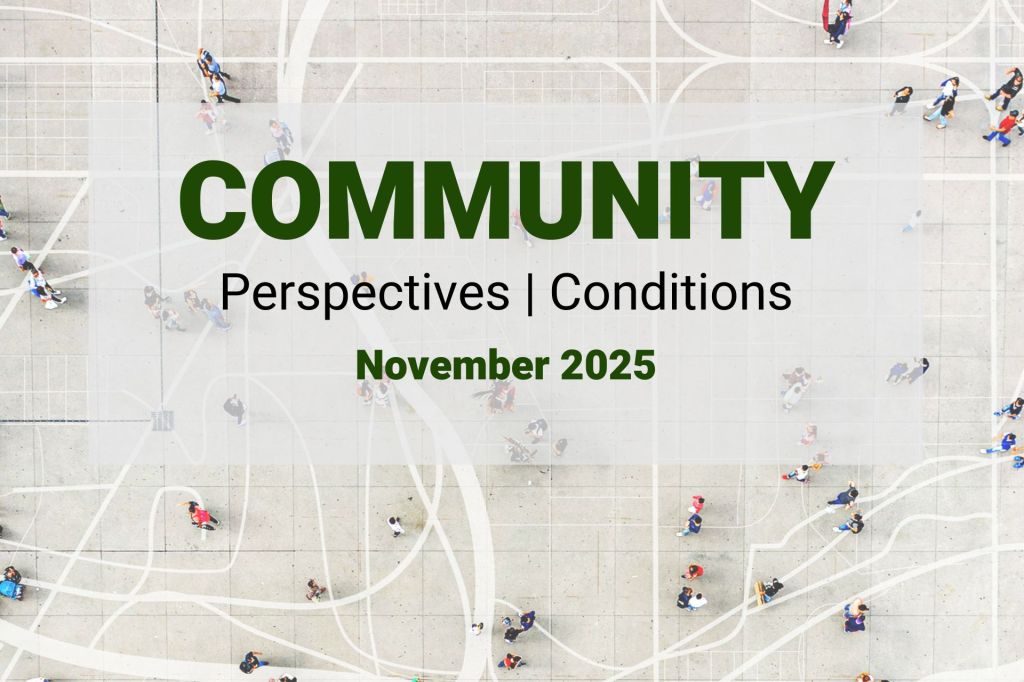Taking structural roots into account to address the US racial wealth gap
September 6, 2023
Inequality is a big topic in the US. On the economic side, the conversation often focuses on income inequality. But people are also talking about the wealth gap. National data shows that in 2019, for every dollar in wealth held by white families, Black families held just 13 cents of wealth.
Those concerned about the wealth gap are working hard to shrink it. They argue that in addition to being unjust, wealth inequity inhibits the national economy. Over the past three decades, many efforts focused on more “active” forms of wealth building. These strategies include teaching people how to set up a bank account and start saving. Or they might help people find well-paying jobs with benefits like retirement plans. These are well-intentioned approaches that have indeed helped some of the families that have been part of such programs.
There’s just one problem: These approaches around active wealth building haven’t had much impact on the significant national wealth gap since their emergence in the 1980s.
A new report suggests it’s because wealth inequality initiatives have not addressed a deeply rooted driver of the wealth gap. In “The Importance of Wealth to Family Well-Being,” authors Sara Chaganti of the Federal Reserve Bank of Boston and Alexis Mann, formerly of the John T. Gorman Foundation, argue that it’s time to focus the work around strategies to shrink the gap on passive wealth accumulation, taking into account the history behind it. They then offer examples of existing strategies that aim to do just that.
Making the distinction between active and passive wealth
Passive wealth comes from things like homeownership and investments in the stock market. You need a certain amount of money to buy into such wealth-building opportunities in the first place. Those assets typically grow over time and build even more wealth, which you can then pass along to future generations of your family. The cycle repeats, and the wealth grows—for those who could buy in to begin with.
For many Black families in the US, the story around passive wealth looks very different. Recent research shows that some passive wealth stems from structures deeply rooted in racism (Shapiro 2005; Rothstein 2017; Katznelson 2005). These structures include land allocated to white families under the Homestead Act (Shanks 2005), stolen labor during enslavement, policies that took land from Black farmers (Daniel 2013), and practices that made it illegal until 1948 to sell some homes to Black buyers.
Generations of Black people could not access or grow wealth with these structures in place. Even after some of these policies became illegal, due to these racist barriers, some families started from behind others in generating wealth.
Chaganti and Mann argue that you cannot shrink the US wealth gap without understanding this history and its legacy in present policies and practices. Strategies that solely focus on individual behaviors likely won’t move the needle in this longstanding context. Instead, the authors suggest leaning into approaches that target the structural factors.
“Two people could get the same opportunity, but what then happens with that opportunity can vary enormously depending on many other things that have nothing to do with their own effort,” said Chaganti. “People’s outcomes are not just a product of their attitude or their hard work.”
Seeking to recenter the conversation on what really drives the racial wealth gap
Chaganti and Mann both worked on issues of wealth inequality for many years before moving into their positions at the Fed and at Gorman.
“We saw the conversation trending more toward a focus on behavioral explanations, and we were concerned about that,” Chaganti said. “We thought that in our roles at the Fed and at Gorman, this could be an opportunity for us to build our work on the extensive research focused on the structures, institutions, and policy that have contributed to wealth inequality.”
Chaganti and Mann knew there were many people working in community development and philanthropy who genuinely wanted to help families find financial stability and thrive. They wanted to bring wealth to the forefront of that work.
“The conversation tends to focus on income inequality. But wealth is a central part of that conversation that can’t be overlooked if people really care about family wellbeing,” Mann said.

“The conversation tends to focus on income inequality. But wealth is a central part of that conversation that can’t be overlooked if people really care about family wellbeing.”
– Alexis Mann, Visiting Research Scholar at Brandeis University and former Senior Program Associate at the John T. Gorman Foundation
Three key factors behind wealth disparities throughout history into the present
Chaganti and Mann help shed light on these hidden structures around passive wealth accumulation. Their report and an accompanying animated video serve as an entry point for people to think about how those structures have impacted their own family’s wealth.
The authors place factors that drive wealth inequality into three categories. First, there are the types of ownership available. In the US, these most often include homeownership, financial investments, and business ownership.
Next, you must consider who has access to these types of ownership and, more importantly, when certain types of families were denied this access throughout history. Racist policies that barred Black families from buying homes is one example. Whether or not someone applying for a loan is considered a credit risk by traditional lending standards is another.
Finally, there’s the question of whether families can protect the wealth they have. For instance, generations of predatory practices meant some families have been more vulnerable to home foreclosure than others.
“You see families over generations be blocked at those different steps and the ramifications for those families and their communities over time,” said Mann. “You can also trace your own family’s experience with wealth around where you do or do not enter into those three categories.”
Exploring strategies that align with a focus on history
The authors felt it was important to walk people through the history, and then connect that history to suggestions for strategies that promote passive wealth-building.
“There isn’t really a shared agenda about how to address this as an issue that’s related to structures and institutions,” Chaganti said. “We wanted to help people understand wealth inequality as an issue that is to some extent about history and racism and public policy.”
She added, “From there, we tried to give folks who wanted to do more about the problem than just pushing financial literacy a historically informed path to explore. We wanted to show a different way to address the wealth gap by attacking the issue at the structural or institutional level.”
The authors share a variety of ideas that have the potential to impact the wealth gap from this perspective. For example, a strategy like employee ownership of a company allows workers not only to earn a paycheck, but also own a share of the company. In addition to a 401k, these workers eventually can retire with a separate ownership stake that has grown over time to build wealth for their families.
In other strategies, the risk people must take on to build wealth is made lighter by pooling it together among a group of people. Take cooperative housing ownership, for instance. In these models, everyone who lives in a building or on a piece of land owns it collectively. That structure means one individual or family can still build wealth through ownership without needing to secure enough money on their own for a down payment on a house.
There are also collective models that help families start building wealth for the next generation right away. State and federal policies are under consideration for what are known as “baby bonds.” These policies would invest a small amount of public funds into trust accounts for low-income children. The accounts would grow over time as passive wealth for children whose families have not had the opportunity to develop generational wealth in other ways.
Chaganti and Mann caution that they cannot say for sure which of the models they present might make a measurable difference in the wealth gap. Each must be tested and evaluated. But the strategies they highlight in their report align with the authors’ understanding of what could truly impact passive wealth building.
Mann said, “We wanted to offer some concrete examples of interventions that on a small scale might not shift these structural issues, but that could be piloted. This could make the idea of implementing them at scale seem less risky for traditional institutions.”
Focusing the Fed’s discussions and work around the racial wealth gap
For Chaganti, this work is also a way to bring together some across the Federal Reserve System who have been working on wealth inequality with understanding around the structures that impact passive wealth.
“The Federal Reserve System as a whole for a long time has acknowledged the significance of wealth to family economic stability and to an inclusive and robust economy,” she said. “We wrote the paper in part because we wanted it to serve as a theoretical backbone for our future research here.”
The report reflects conversations that community development staff at the Fed have been having for several years. The Boston Fed will soon launch one project informed by the principles in the report: a major survey to measure wealth gaps across Massachusetts.
“We’re using it to think about what questions to ask on the survey,” Chaganti explained. “We’re asking questions like, where did you get the down payment for your house? We want to know how people have leveraged some of the wealth they have or how they are thinking about doing so in the future.”

“We want to know how people have leveraged some of the wealth they have or how they are thinking about doing so in the future.”
– Sara Chaganti, Deputy Director, Research & Communications, Federal Reserve Bank of Boston
The concepts in the report have also sparked discussions within the Fed’s racial wealth gap learning community. In the working group, Chaganti said, “we’ve been talking a lot about how passive wealth accumulation happens and what some of the interventions are that bring passive wealth accumulation opportunities to low-wealth families. It’s been really interesting.”
Chaganti and Mann hope the report informs the work of those who want to make real change on the wealth gap.
“We wanted to show that there are structural issues and break down the ways in which there’s a beginning, middle, and end that all have compounding implications for a family’s ability to build wealth,” said Mann. “From all the tremendous research that’s come before, we’re trying to organize it and make sense of it in a way that could then be translated to the action side of things.”

UPCOMING EVENT
Keys to Opportunity in the Housing Market: Renting, Owning, and Implications for the Racial Wealth Gap
November 13, 2023 | 1–2:30 pm ET
Join the Federal Reserve Banks of Boston and San Francisco for this Federal Reserve community development research seminar. Register now >
print REFRENCES
Daniel, P. (2013). Dispossession: Discrimination against African American farmers in the age of civil rights. University of North Carolina Press.
Liveright; Katznelson, I. (2005). When affirmative action was white: An untold history of racial inequality in the twentieth century. W.W. Norton & Company.
Rothstein, R. (2017). The Color of Law: A forgotten history of how our government segregated America.
Shanks, T. W. (2005). The Homestead Act: A major asset-building policy in American history. In M. Sherraden (Ed.), Inclusion in the American dream: Assets, poverty, and public policy. (pp. 20-41). Oxford University Press.
Shapiro, T. M. (2005). The hidden cost of being African American: How wealth perpetuates inequality. Oxford University Press








![[Watch] How Your Experience of the Economy Matters to the Fed: A Conversation with Governor Michael S. Barr](https://fedcommunities.org/wp-content/uploads/2025/10/connecting-communities-how-experience-economy-matters-fed-conversation-governor-barr.jpg?w=1024)
